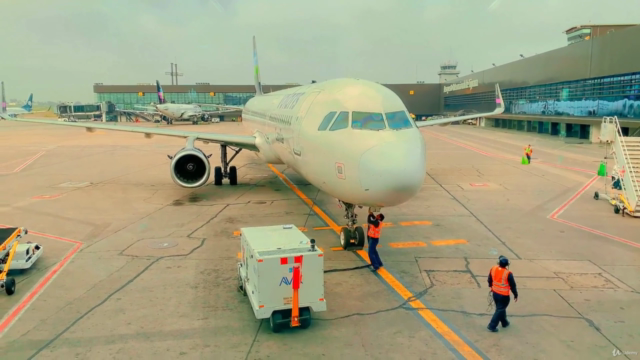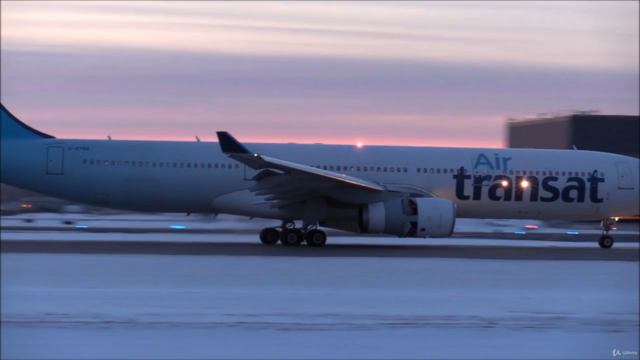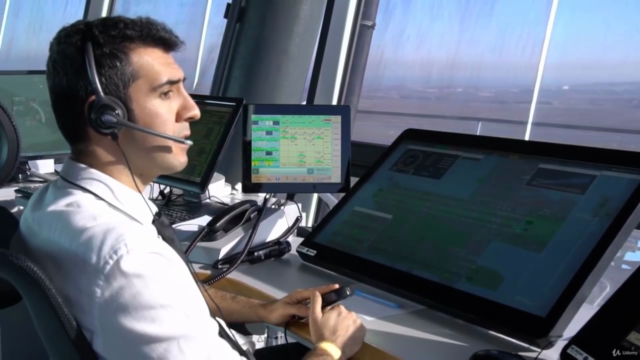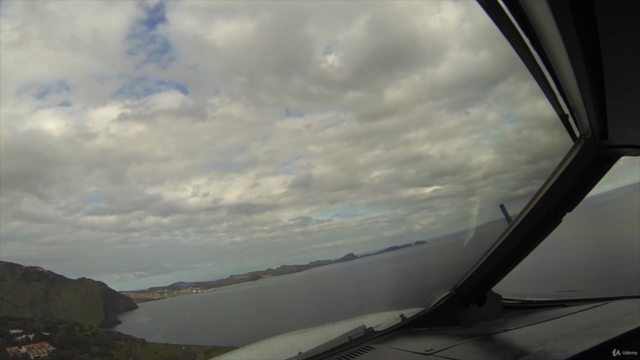Learn Radio Communication for Pilots

Why take this course?
Let's go through each of these points one by one, as you've outlined a comprehensive approach to understanding and communicating with Air Traffic Control (ATC) during different phases of flight.
When to contact with departure controller?
- Initial Contact: Typically, you should contact the departure controller after taxiing to the holding point or when cleared for takeoff by the ground control if there's a direct transfer from ground.
- "Cleared for Departure": You will receive this clearance from the departure controller, which includes your initial cruising altitude and heading.
- Route Deviation: If you need to deviate from the SID due to weather or other reasons, you can request this by saying, "Request deviation from [SID name], due to [reason]."
What is SID (Standard Instrument Departure)?
SID stands for Standard Instrument Departure. It's a pre-planned set of flight instructions designed to provide safe and efficient initial departure from an airport when certain instrument conditions exist, or when visual references are not available.
How to request a route deviation because of dangerous clouds?
- Contact ATC: First, establish two-way radio communication with the appropriate ATC unit (in this case, the departure controller).
- State Your Request: "Departure, [your call sign], at [altitude], request deviation from the published SID due to encounters of [description of dangerous clouds/weather] at [specific point or altitude]."
- Listen and Confirm: Wait for ATC's response and confirm any new route or instructions.
Center Controller Responsibilities
The center controller is responsible for handling communications and control of aircraft en route between the departure and arrival FIRs (Flight Information Regions). Their responsibilities include maintaining separation between aircraft, providing weather information, and handing off aircraft to approach control as they near their destination.
Flight Information Region (FIR)
A FIR is a geographical area of airspace for which a Flight Service Unit (FSU) provides flight information and alerting services to IFR and certain VFR flights. It's similar to the concept of an oceanic control sector at sea.
Approach Controller Responsibilities
The approach controller takes over from the center controller and is responsible for controlling aircraft from the FIR boundary inward, up to the point where they land or are handed off to the tower controller.
STAR (Standard Terminal Arrival Route)
STAR stands for Standard Terminal Arrival Route. Similar to a SID, a STAR is a pre-planned set of instructions designed to guide an aircraft into an airport safely and efficiently under instrument flight rules.
Contacting Approach Control
- Initial Contact: Typically, you will contact approach control when you are established on the final approach fix or when given a vector for an approach by departure/center control.
- "Cleared for the Approach": You will receive this clearance from the approach controller, which includes specific headings, altitudes, and speeds to follow for the approach procedure.
- Change Frequency: After landing or being cleared for a missed approach, you will change to the tower frequency if you are not already on it.
Tower Controller Responsibilities
The tower controller handles all traffic within the airport's terminal control area (TCA) and is responsible for sequencing aircraft for takeoff and landing, monitoring runway traffic, and providing advisories to pilots on the ground movement of other aircraft.
Go-Around Procedure
If you are cleared for a go-around (usually due to an issue with your approach), you will inform ATC by saying, "Going around, [your call sign]." The tower will then provide vectors for another approach or clear you for departure as appropriate.
Full Flight Communication
To simulate a full flight from Hamburg to Munich, you would follow these steps:
- Engine Start and Taxi: Contact ground control, receive taxi instructions, and proceed to the runway holding point.
- Takeoff and Initial Contact with Departure Control: After takeoff, establish contact with departure control and follow the SID.
- En Route: Communicate with center control, monitor flight progress, and maintain separation as instructed.
- Approach Phase: Contact approach control, follow the STAR into the airport area, and prepare for landing.
- Landing and Ground Operations: Follow tower instructions for landing, and after touching down, taxi to the gate under tower guidance.
Conclusion and Suggestions
In conclusion, effective communication with ATC is crucial for the safety and efficiency of flight operations. Here are some suggestions to enhance your ATC communications:
- Listen Carefully: Pay close attention to ATC instructions and understand them fully before responding.
- Speak Clearly: Use standard phraseology and speak clearly and confidently.
- Stay Informed: Keep up-to-date with NOTAMs (Notices to Airmen) and weather reports that may affect your flight.
- Plan Ahead: Know your route, expected holding points, and potential alternate routes in case of deviations.
- Be Courteous and Patient: Maintain good two-way radio communication with ATC and be patient during busy airspace or unexpected situations.
By following these guidelines and practicing good communication habits, you'll ensure a smooth and safe flight from engine startup to after landing.
Course Gallery




Loading charts...